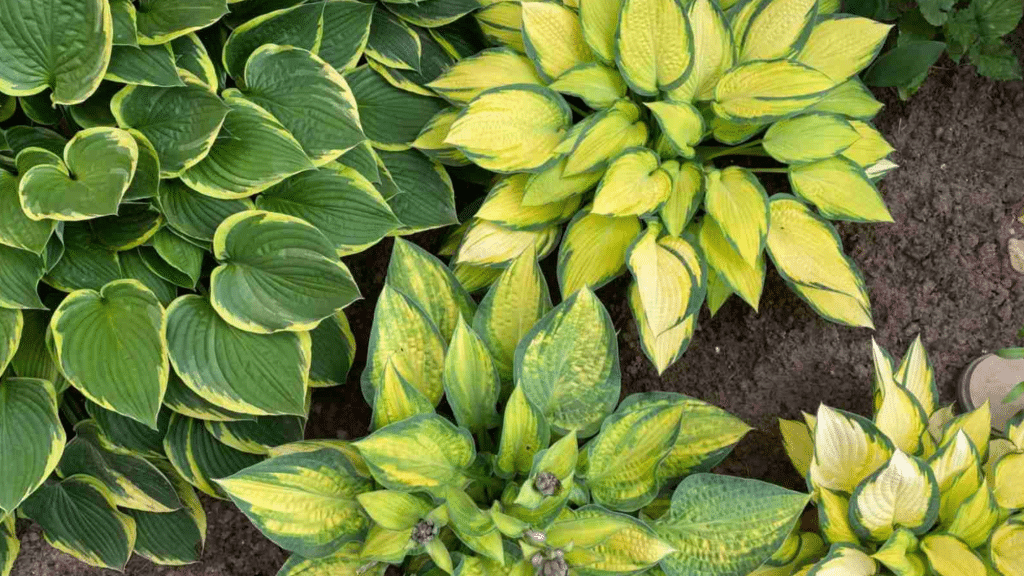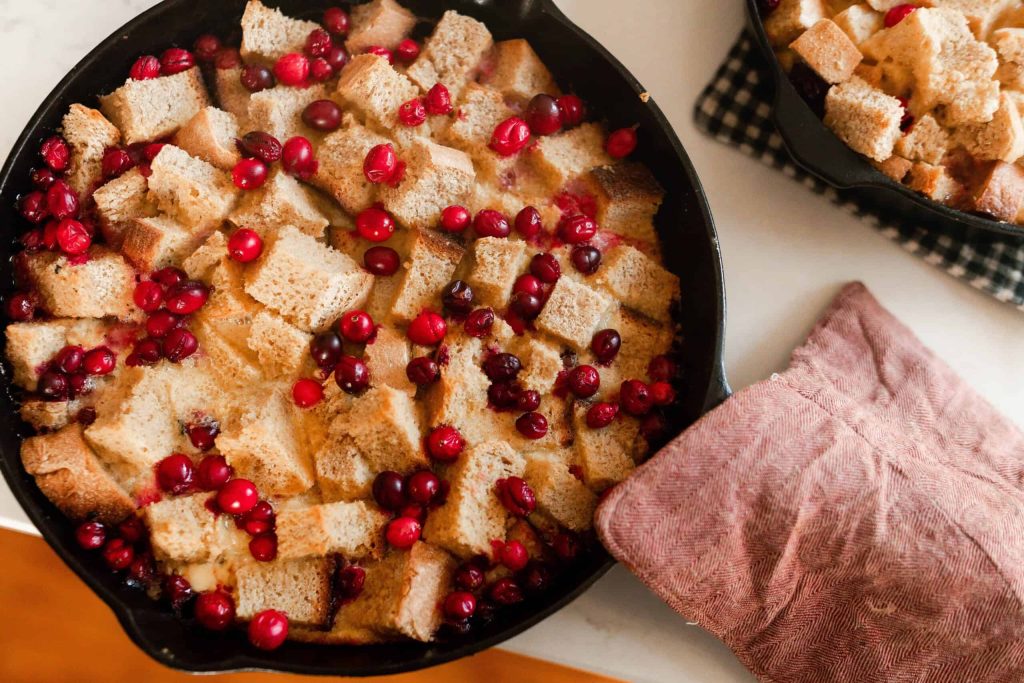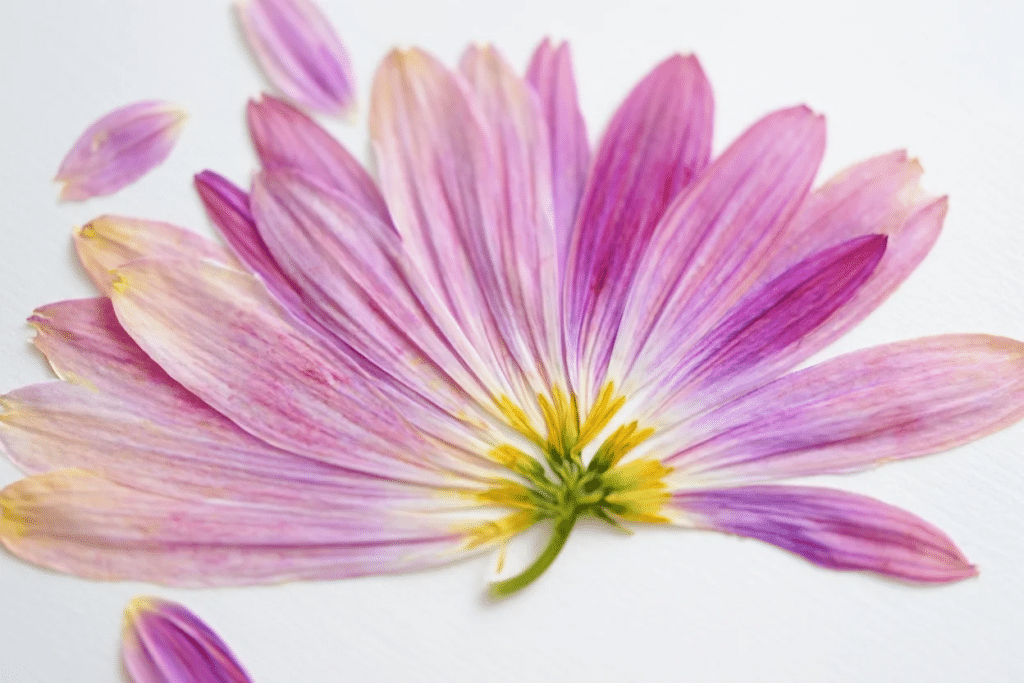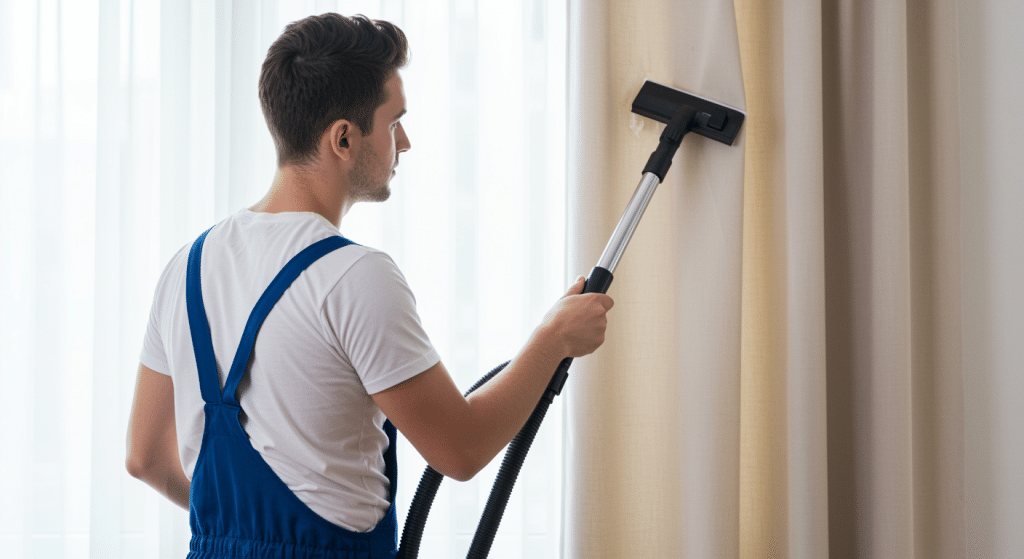Tired of watching your beautiful hostas turn into crispy, yellowed disasters by mid-July? You’re not alone.
These shade-loving perennials promise lush foliage all season long, but without the right care and the right fertilizer to keep hostas thriving, they can leave you feeling frustrated and defeated.
Hostas aren’t actually high-maintenance plants. Most gardeners miss these simple steps, and their plants suffer for it.
But what if you could keep those gorgeous leaves looking magazine-worthy from spring through fall?
The secret lies in understanding what these plants really need to thrive, not just survive.
Common Summer Problems and Quick Fixes
Even with proper care, hostas can face challenges during the heat of summer. Here’s how to spot trouble early and fix it fast.
| Problem | Signs to Look For | Quick Fix |
|---|---|---|
| Brown Leaf Edges | Crispy, brown margins on leaves | Move to shadier spot, increase watering, add extra mulch |
| Yellowing Leaves | Widespread yellow coloring (not just bottom leaves) | Improve drainage, reduce watering, apply balanced fertilizer |
| Slug and Snail Damage | Large irregular holes, silvery trails on leaves | Set beer traps, sprinkle crushed eggshells, use iron phosphate bait |
| Wilting Despite Moist Soil | Plants droop even when soil feels wet | Stop watering, improve drainage with compost, remove black roots |
Most hosta problems stem from watering issues or pests. Check your plants weekly, act fast when you spot trouble, and remember it’s easier to prevent problems than fix them later.
Simple Tips for Healthy Hostas in Summers
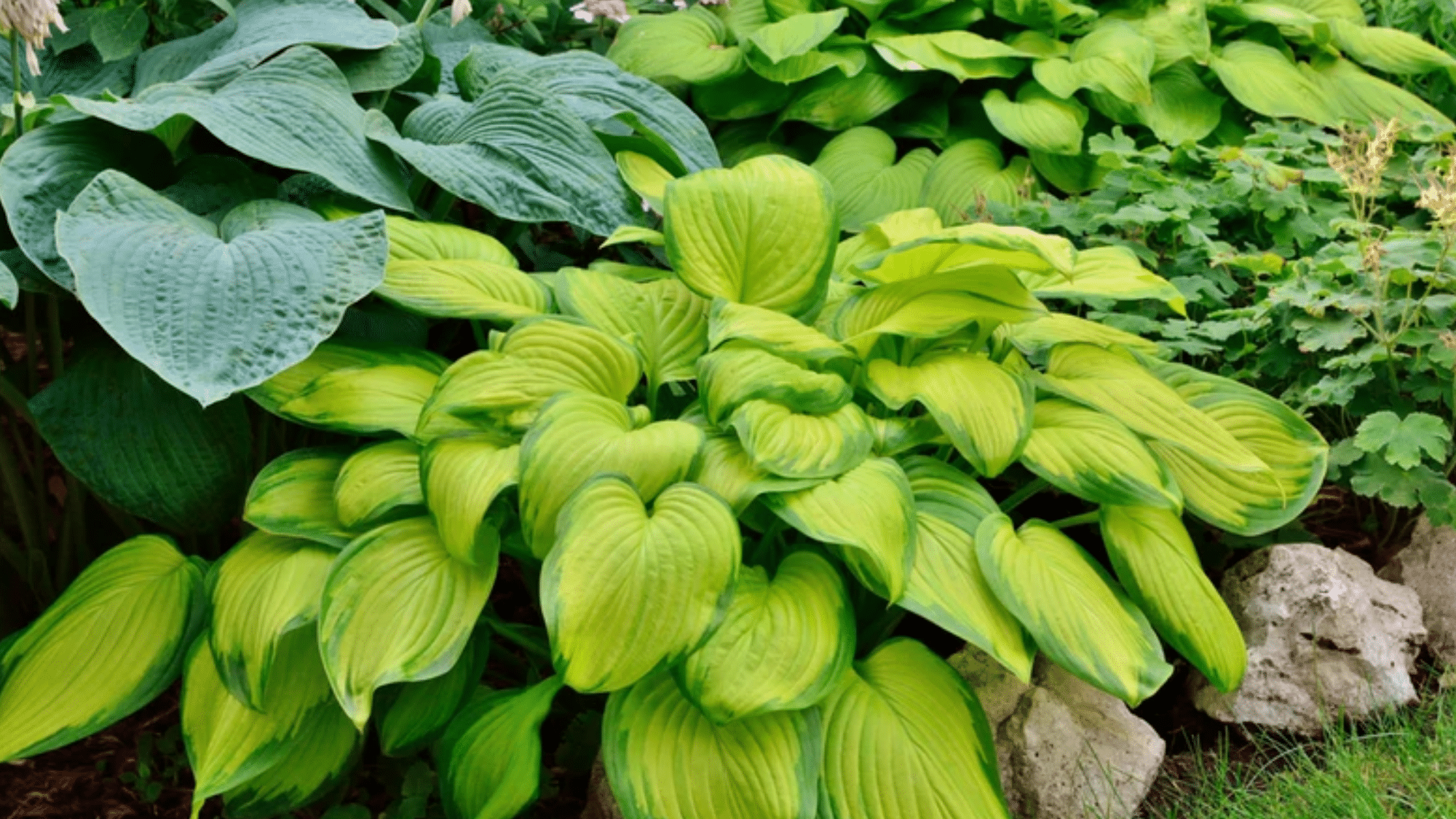
Success with hostas comes down to getting the basics right and staying consistent. Let’s walk through each essential step.
1. Choose the Right Location
Morning sun gives hostas the energy they need, but afternoon shade prevents those ugly brown scorch marks. Think of it like sunbathing a little is great, too much burns.
Most varieties thrive with 2-4 hours of gentle morning light, then protection during the harsh afternoon heat.
2. Water Wisely
Hostas need about one inch of water weekly, delivered slowly and deeply. Water early morning so leaves dry before evening, wet foliage overnight invites disease.
Stick your finger two inches into the soil; if it’s dry, it’s time to water. Avoid creating puddles or soggy conditions that rot roots.
3. Mulch to Retain Moisture
A 2-3 inch layer of organic mulch around your hostas works like magic. It keeps roots cool, retains moisture, and blocks weeds.
Pull mulch back a few inches from the crown to prevent rot. Shredded bark, compost, or leaf mold all work perfectly for this job.
4. Fertilize for Lush Foliage
Feed hostas monthly during growing season with balanced, slow-release fertilizer or compost.
Spring feeding kickstarts growth, while summer applications maintain that deep green color, just as you’d compare 10-10-10 fertilizer before applying it to other garden favorites.
Stop fertilizing by late summer, you want plants to prepare for dormancy, not produce tender new growth before frost hits.
5. Control Pests and Diseases
Slugs and snails love hostas as much as you do. Check for silvery trails and chewed holes, then use beer traps or diatomaceous earth.
Watch for yellow or spotted leaves that signal disease. Remove affected foliage immediately and improve air circulation to prevent spread.
6. Summer Maintenance Tasks
Regular upkeep keeps hostas looking their best. Pull weeds before they compete for nutrients, cut flower stalks after blooming unless you want seeds, and remove yellowing leaves promptly.
These simple tasks take minutes but make a huge difference in your garden’s overall appearance and plant health.
Final Takeaway
Beautiful hostas all summer long isn’t about perfection; it’s about consistency. Small, regular efforts beat sporadic intensive care every time.
Your garden doesn’t need to be magazine-perfect to bring you joy. Healthy, thriving hostas create that cool, peaceful feeling we all crave in our outdoor spaces.
Start with just one or two of these techniques this season. Master those, then gradually add more to your routine. Before you know it, caring for hostas will feel as natural as your morning coffee.
Remember, everyone learns through trial and error. Your hostas are more resilient than you think.
FAQs
What Does Epsom Salt Do for Hostas?
Epsom salt adds magnesium for greener leaves, but most soils already have enough. It’s usually unnecessary for healthy hostas.
How to Rejuvenate Hostas?
Divide overcrowded clumps every 3-5 years, remove damaged leaves, add compost to soil, and ensure proper watering and shade.
Is Vinegar and Baking Soda Good for Plants?
No. Vinegar can burn leaves and damage roots, while baking soda disrupts soil chemistry. Stick to proven fertilizers instead.
What Do Coffee Drounds Do for Hostas?
Coffee grounds add organic matter and slight acidity to soil. Use sparingly mixed with compost too much can create drainage problems.


